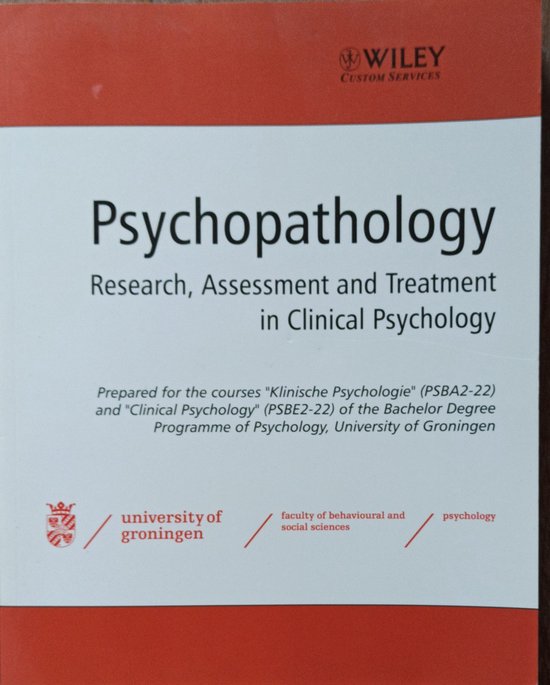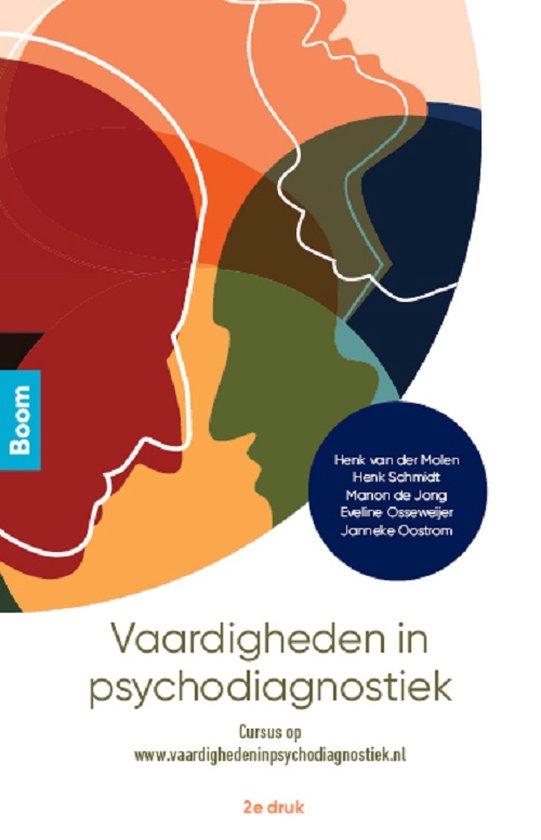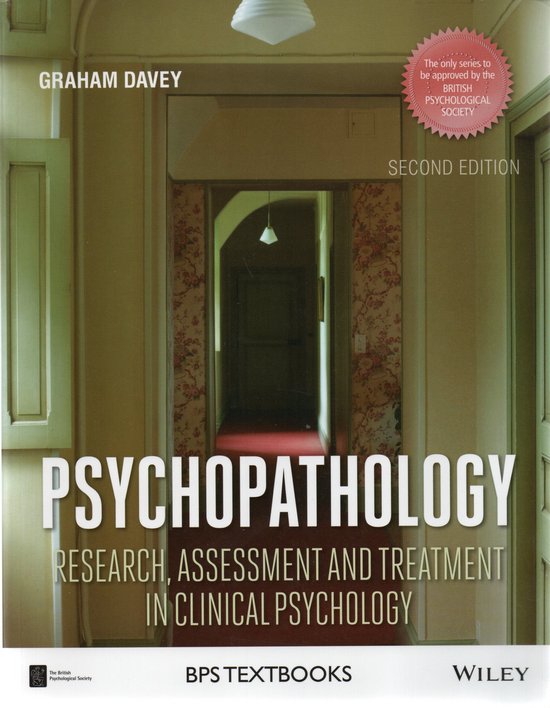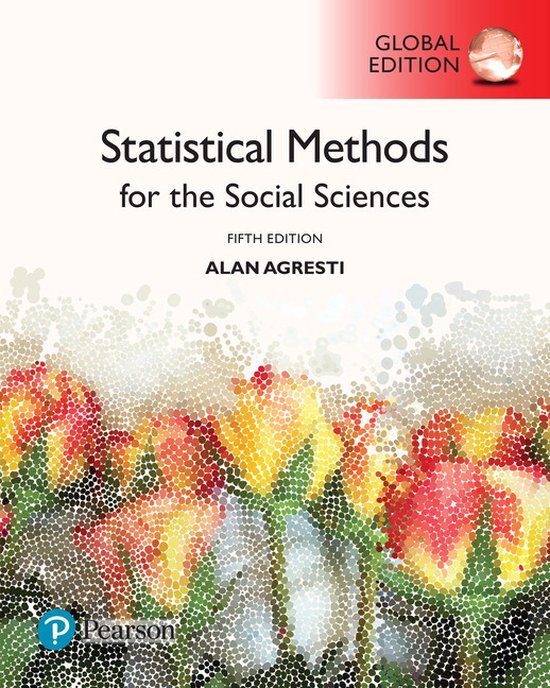
Psychopathology - Research, Assessment and Treatment in Clinical Psychology
Psshorahesr and the assoctuted profession of clintcal
psvchology have become established topies of study on undergraduate ps\chology degree programmes. This ts hardly surpnsng ven that à substantal proportwon of students entering degree programmes un psychology do so with a career in applied pevchology firmlv m mand. Thus text has been designed to provide those students with a comprehensive coverage of both psychopathology and clumecal practice, and is wntten to serve as a textbook accessible at all undergraduate levels and as a source book for more in-depth study at postgraduate masters level. The emphass in the book 1ws on prowiding students with a thorough acadermc knowledge of psychopathology, based on current research in a range of relevant areas — especially knowledge of the assessment, aeuology and effective treatments for a range of common and less common mental health problems.
In addiuon to estabhishing a working academic knowledge of psvchopathology, the book attempts to convey some of the issues and challenges thar face climcal practtioners, as well as to provide readers with a realistic msight into what clinical psychologssts do and how they do 1. To this end, each chapter ends with a list of clinical issues that confront the practising clinical psychologist across each of the psychopathologies discussed. In addition, Treatment in Practice features explain how specific treatments are applied in practice, many chapters contain discussions of how clhmical services are structured, and there are also features describmg the kinds of acuvitses undertaken by clinical psychologists in a typical week. To be sure, this is not a textbook designed for students undergoing clinical training, but it is hoped that it will provide a much-needed insight for undergraduate students into psychopathology and how it is assessed and treated.
The frst four chapters cover basic conceptual issues in psychopathology, including the thorny topic of defining psychopathology, the tools used to assess psychopathology, the methods used to research psychopathology and the techniques used to treat psychopathology. Chapters 5 to 16 cover a range of specific psychopathology categories, including a majority of those likely to be encountered by practising clinical psychologists.
Each chapter covering a specific psychopathology is organized in a similar fashion. Readers are initially provided with a personal account of the psychopathology, which is used to introduce a discussion of the main features of the problem including any relevant diagnostc issues. Chapters then continue with an in-depth discussion of research into the aetiology and origins of the psychopathology, followed by a broad coverage of the treatments and interventsons commonly applied to that psychopathology.
The diagnosuc classification scheme described in this text is DSM-IV-TR - a diagnostic scheme widely adopted by clinical psychologists involved in both practice and research. It is acknowledged that there 1s currently an extensive debate about
the value of diagnosis in clinical practice, and these issues are covered in the text, from the considerable Umitations of diag: nostic classification as currently conceived (see Chapter 1) to issues associated with the application of individual diagnostic criteria (see Chapters 5 to 16).
The text is supplemented by a range of features designed to
facilitate effective teaching and learning, They include:
e Focus Point Boxes: These provide more in-depth discussion of particular topics that are conceptually important, controversial or simply of contemporary interest. Whenever possible, these are linked to everyday examples — such as high-profile news items = that allow readers to consider the issues in a contemporary, everyday context.
® Activity Boxes: Activity boxes offer readers an opportunity to engage in active learning about a topic by completing a task or activity. Examples of such activities include simple experiments designed to demonstrate a particular phenomenon, opportunities for further reading and research, or topics and questions suitable for small
group discussion. Instructors or teachers may want to make use of these activities when structuring their class teaching. Access to these activities based on the type
of activity, suitability of class size, skills development, learning objectives and time requirement can be found on the book’s associated website.
@ Research Methods Boxes: These features contain detailed descriptions of methods utilized in psychopathology research, describing the pros and cons of individual methods and their potential uses. These examples act to supplement the general material provided on research methods in Chapter 3. Like most researchers, those involved in clinical psychology research are often imaginative in their use of research methods, and many of the examples provided in research methods boxes attempt to convey how methods from other areas of psychology and science generally can be adapted to study issues relevant to psychopathology.
@ Case Histories: Most chapters contain example case histories describing the symptoms, experiences and life circumstances encountered by individuals experiencing particular psychopathologies. Each of these examples concludes with a clinical commentary
that is designed to link the derail of that specafic case history to the general facts to be learned in the text.
e Client’s Perspective Boxes: Many chapters also contain examples of an individual’s own descriptions of the ...
| Auteur | | Graham Davey |
| Taal | | Engels |
| Type | | Paperback |
| Categorie | | Psychologie |




